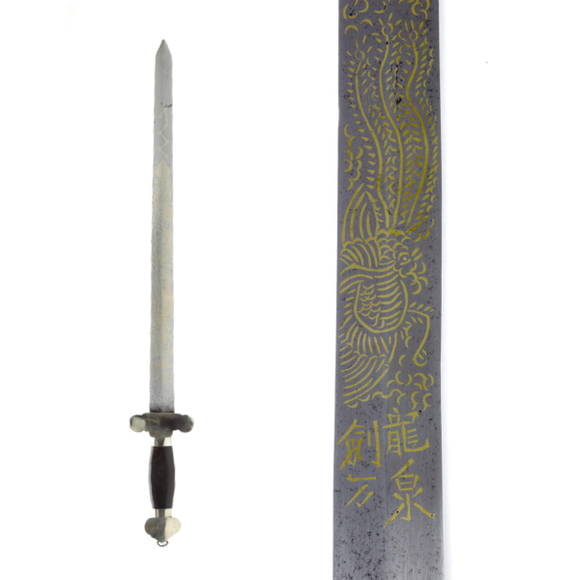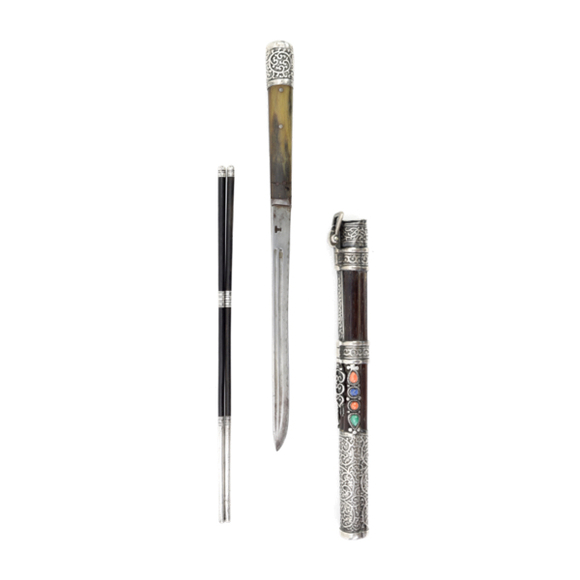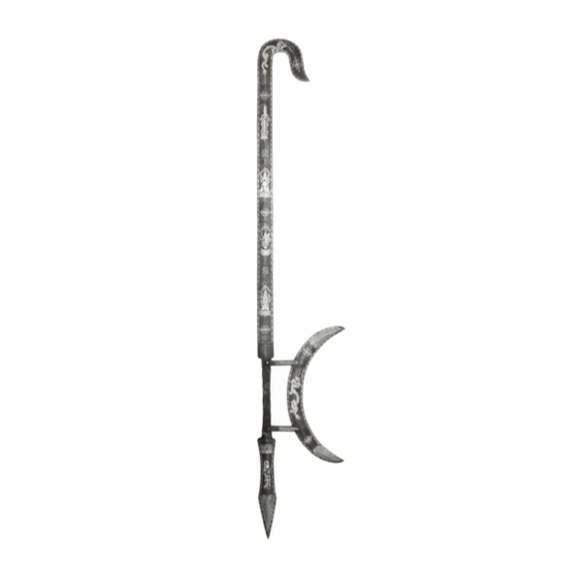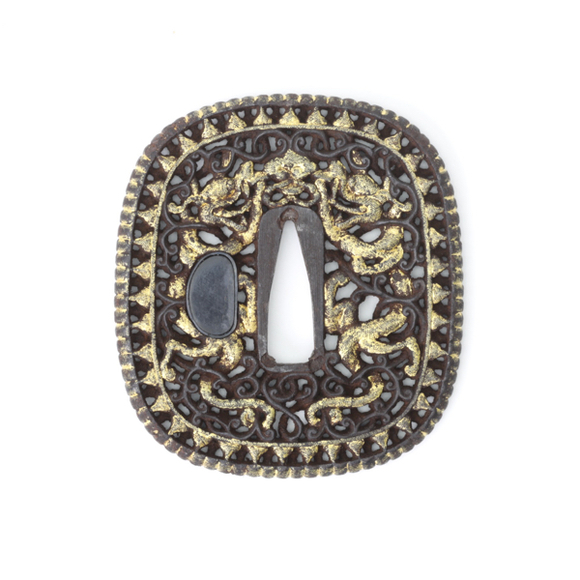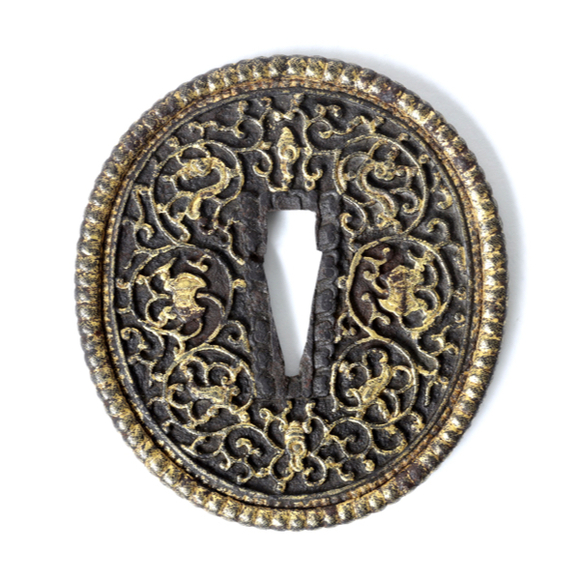Language: Mandarin Chinese
Source: Classical literature
Description
The Bāqí (八旗) or "Eight Banners" or jakūn gūsa in Manchu were an administrative division under which all Manchu households were placed. In the conquest phase, the Manchu armies started with four banners which were later expanded to eight. In these early times, new tribes that were assimilated into the Manchu army were divided over these banners to prevent mutiny. Especially loyal clans were allowed to remain intact and were placed under a single banner. Once the Qing was established, Manchus were born under a certain banner and typically served under that banner for life, although in rare cases entire families were moved from one banner to another.
The Eight Banners

English: "Bordered Yellow Banner"
Mandarin Chinese: Xiānghuángqí (鑲黃旗)
Manchu: kubuhe suwayan gūsa

English: "Plain Yellow Banner"
Mandarin Chinese: Zhènghuángqí (正黃旗)
Manchu: gulu suwayan gūsa

English: "Plain White Banner"
Mandarin Chinese: Zhèngbáiqí (正白旗)
Manchu: gulu šanggiyan gūsa

English: "Plain Red Banner"
Mandarin Chinese: Zhènghóngqí (正紅旗)
Manchu: gulu fulgiyan gūsa

English: "Bordered White Banner"
Mandarin Chinese: Xiāngbáiqí (鑲白旗)
Manchu: kubuhe šanggiyan gūsa

English: "Bordered Red Banner"
Mandarin Chinese: Xiānghóngqí (鑲紅旗)
Manchu: kubuhe fulgiyan gūsa

English: "Plain Blue Banner"
Mandarin Chinese: Zhènglánqí (鑲藍旗)
Manchu: gulu lamun gūsa

English: "Bordered Blue Banner"
Mandarin Chinese: Xiānglánqí (鑲藍旗)
Manchu: kubuhe lamun gūsa
A warrior caste
Being a "Bannerman" or qírén (旗人) came with special privileges such as land grants, stipends in rice and payment in silver, but also with obligations: banner households were required to raise a set number of horses and warriors and bannermen could only work as warrior or administrator. Bannermen "ate the emperor's rice" and were his servants, and Bannermen were sent far and wide to protect and expand the realm. The Eight Banners were thus effectively a warrior caste much like the famous Samurai of neighboring Japan.
The Banners served as an elite army of the Qing dynasty, and while the regular Chinese army was mainly used for internal peacekeeping, the Eight Banners were usually sent out to frontier areas and played a vital role in the expansion of the Qing.
The color of one's banner corresponded with a location in the capital, on the battlefield, and in camps when on the move. Someone born under the left wing would live in a corresponding area in the garrison, serve under the left wing in the army, and take that position in the camp. This made it easy to organize large armies: commanders would draw a set number of men from each banner from all over the empire and the moment they assembled they knew where they stood.

Eight Banner positions in the Inner City around the Imperial Palace in Beijing.
Upper Three Banners
The "Plain Yellow Banner", "Plain White Banner", and "Bordered Yellow Banner" were called the "upper three banners" and had a special status. They were under the direct control of the Emperor, whereas the other banners were usually lead by princes. Members of elite units were also often drawn from the Upper Three Banners and families that earned merit or intermarried nobility were sometimes moved into one of these upper banners.
Banner organization
On the smallest level, there were the niru (Manchu) or zuǒlǐng / 佐領 (Mandarin Chinese) consisting of about 300 men and their families. Niru is a type of hunting arrow, and these companies were originally based on Manchu hunting parties.
15 niru made one jalan or cānlǐng (參領), consisting of roughly 4500 men and their families.
4 jalan made one gūsa or "Banner", consisting of roughly 18.000 men and their families.
(The numbers given fluctuated over time.)
Banner ranks
Jiāngjūn (將軍), General. Manchu: Jiyanggiyūn.
Military grade 1. Provincial Banner General.
Fù dūtǒng (副都統), Brigade-general. Manchu: Meiren i janggin.
Military grade 2a.
Fù Jiāngjūn (副將軍), Vice General.
Xié lǐng (協領), Colonel of a Regiment. Manchu: Gūsa-i da.
Military grade 3a.
Chéng shǒu wèi (城守尉), Garrison commander. Manchu: Hoton-i da.
Military grade 3b.
Fáng shǒu wèi (防守尉), Commander of the 2nd class of a minor garisson.
Military grade 4a.
Zuǒlǐng (佐領), Company commander. Manchu: Hiru-i janggin.
Military grade 4b.
Fángyù (防禦), Platoon commander. (Captain)
Military grade 5a.
Xiāoqí xiào (驍騎校), Lieutenant. Manchu: Funde bošokū.
Military grade 6a.
Qiánfēng (前鋒), Sergeant. Manchu: Gabsihiyan.
Lǐngcuī (領催), Corporal. Manchu: Bošokū.
Xiāoqí (驍騎), Private. Manchu: Aliha cooha.
Literally: Valiant cavalry.
Mongol and Han Banners
Initially, there were only the Manchu Eight Banners (八旗滿洲), or Bāqí Mǎnzhōu which already were quite an ethnic mix. In the early 17th century many more Han Chinese and Mongol soldiers joined the Qing cause and two other Eight Banners were raised, the Bāqí Ménggǔ (八旗蒙古) or Mongol Eight Banners and the Bāqí Hànjūn (八旗漢軍) or "Eight Banners of the Chinese Martial". Both were hereditary, like the Manchu Eight Banners. The "Chinese Martial" initially consisted mostly of former Ming soldiers that joined the Qing, and their descendants enjoyed elevated status to the end of the dynasty. After the Qing dynasty fell, all Bannermen including the Mongol Banners and Hànjūn were designated Manchu by the new government.
Eight Banner soldiers
The Eight Banners consisted for a large part of mounted archers called the xiāoqī (驍騎) or "Valiant Cavalry", and some specialized units such as the Vanguard, Guard, and Jianruiying. The Hànjūn also had mounted archers but was mainly known for their specialization as infantry and artillery, backing up the swift Mongol and Manchu mounted archers.
Further reading
For a quick overview, there is a pretty good Wikipedia article on the Eight Banners.
The standard work on the Manchu Eight Banners is: Mark C. Elliott; The Manchu Way, Stanford University Press, 2001.
For a glimpse of the life of a bannerman in 17th century China, see: Nicola Di Cosmo; The Diary of a Manchu Soldier in Seventeenth-Century China: "My Service in the Army", by Dzengseo, Routledge Studies in the Early History of Asia, 2007.
And for Banner life in the later Qing, see Pamela Kyle Crossley; Orphan Warriors, Princeton, N.J.: Princeton University Press, 1990.
More on banner structure and rank, see Ulrich Theobald's article on www.chinaknowledge.com.

